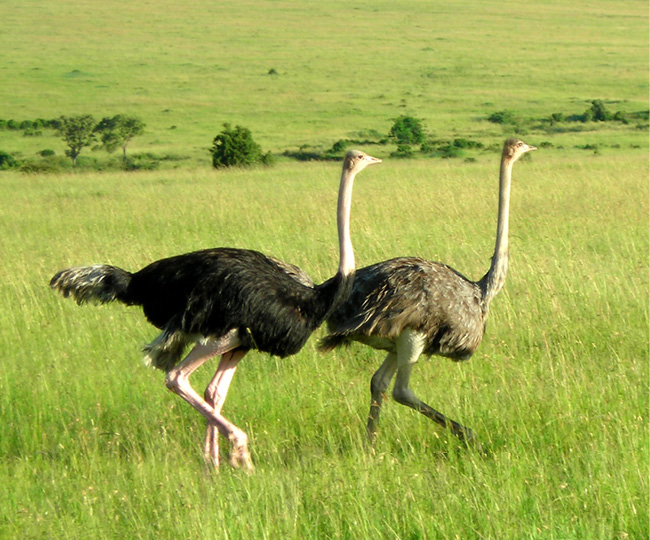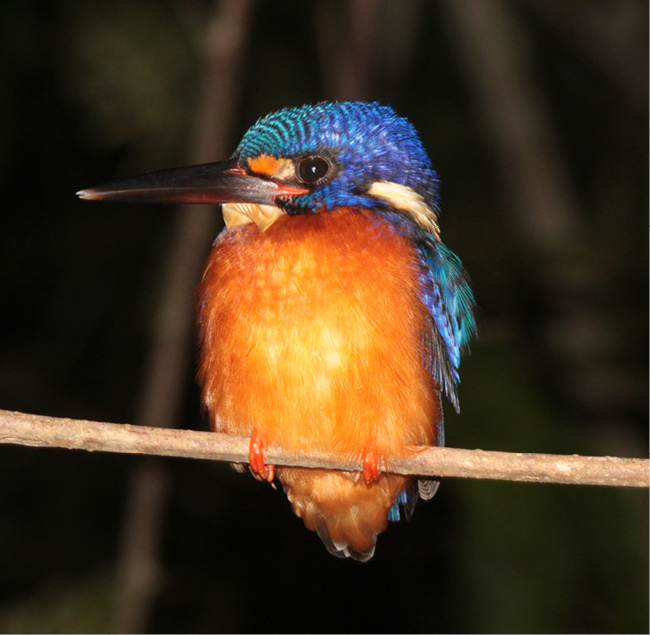Title Page
101 AMAZING FACTS ABOUT BIRDS
Jack Goldstein
Publisher Information
Published in 2013 by
Andrews UK Limited
www.andrewsuk.com
The right of Jack Goldstein to be identified as the Author of this Work has been asserted by him in accordance with the Copyright, Designs and Patents Act 1998
Copyright 2013 Jack Goldstein
All rights reserved. No part of this publication may be reproduced, stored in a retrieval system, or transmitted, in any form or by any means without the prior written permission of the publisher, nor be otherwise circulated in any form of binding or cover other than that in which it is published and without a similar condition being imposed on the subsequent purchaser. Any person who does so may be liable to criminal prosecution and civil claims for damages.
Disclaimer: All facts presented in this title were gained from common and reputable sources in print and on the internet. If any detail within this title is found to be incorrect, the author will be happy to publish a corrected version.
Introduction
Did you know that an albatross can fly fifteen million miles in a single lifetime? Or that flamingos can only eat when their heads are upside down? This fantastic quick-read eBook features 101 amazing facts split into categories such as record breakers, parrots, seabirds and many more. So if you want to know what the collective known is for thrushes, or just how deep emperor penguins can dive, then this is the book for you! Find the information you want, fast!
Follow Jack Goldstein on Twitter @GoldsteinBooks
Visit Goldstein Books at www.jackgoldsteinbooks.com
Record Breakers - Part 1
- The peregrine falcon has been known to dive at speeds of more than 240 miles per hour, making it the fastest recorded bird on the planet.
- For actual powered flight however, the spine-tailed swift is the fastest, at 106 miles per hour.
- The longest feathers ever measured were on a Japanese phoenix fowl - its tail feathers were over ten metres long.
- The Australian pelican has the longest beak of any bird - it is half a metre in length!
- The wandering albatross has the greatest wingspan of any bird - over three and a half metres.
- The bee hummingbird is the smallest bird in the world - it is just 2.75 inches long and weighs only one and a half grams. Amazingly, its beak and tail make up half of its tiny length!
- Gentoo penguins hold the record for the fastest swimming bird - twenty-five miles per hour!
- The tallest bird which can fly is the crane - some have been known to stand six and a half feet tall!
- The heaviest flying bird is the great bustard, which can weigh as much as 21 kilograms.
- The kiwi lays the largest egg relative to its body size of any bird in the world.

Collective Nouns - Part 1
Here are some of the more unusual collective nouns for birds...
- A siege of bitterns
- A bellowing of bullfinches
- A gulp of cormorants
- A murder of crows
- A wake of buzzards
- A piteousness of doves
- A congress of eagles
- A bazaar of guillemots
- A clattering of jackdaws
- A parliament of rooks

General Facts
- The characteristics of birds are that they have feathers, wings, are warm blooded and lay eggs.
- More than 10,000 species of birds are believed to exist across the planet.
- Birds have special lightweight skeletons which enable them to fly - many of their bones are in fact hollow.
- The most intelligent birds across the world have been seen using tools to complete tasks in the wild - something which scientists of previous generations did not think possible.
- It is thought that birds today are direct descendants of the dinosaurs.
- When migratory birds fly their long journeys, they often do so in a v formation - this has been proven to reduce drag and therefore use less energy throughout the trip.
- The shape of a birds beak depends on what makes up its diet in the wild.
- Some birds, such as the kingfisher, the swift and the grebe cannot actually walk.
- Generally, birds walk on their toes with their heels in the air.
- The plumage of male and female birds often varies greatly; most of the time it is the male of the species with the more showy colours.

Parrots
- There are more than 350 different species of parrot.
- At the time of writing, Poncho the parrot is thought to be the oldest ever member of her species, having celebrated her 87 th birthday in 2012. Shes also not just any ordinary green-winged macaw, as she has starred in films including Ace Ventura and 102 Dalmatians .
- The largest species of parrot is the hyacinth macaw, which can grow to over one metre long.
- The smallest on the other hand are the New Guinea pygmy parrots, with adults only reaching 8 cm in length.
- Most parrots dont build nests, however one exception to the rule is the quaker parrot - they actually build nests which link to one another, forming colony habitations.
- In the wild, parrots can fly as much as 500 miles in just one day to look for food.
- It is thought by many scientists that parrots are not just mimicking what they hear, but can also display an understanding of speech - some think they have the same mental prowess as a two year old!
- Like parrots, the toucan can be taught a number of words and phrases.
- A Parrot is actually featured on the flag of Dominica - the bird chosen is the Sisserou parrot and is native to the island.
- Alex the parrot was an African grey owned by animal psychologist Irene Pepperberg. He not only displayed a vocabulary of more than one hundred words, but also showed that he understood them. He sadly died unexpectedly overnight, and his last words to Irene before she went to bed were You be good, see you tomorrow. I love you.

Interesting and Unusual
- After eating a rat whole, an owl will then vomit out a pellet containing its fur and bones.
- Flamingos are actually born grey, however they acquire their distinctive pink colour from a natural dye called canthaxanthin which is found in their diet of shrimp and algae.
- After leaving its nest, the swallow spends the first four years of its life in the air!
- A chicken egg was once cracked open that had nine different yolks in it!
- There is a genus of birds native to New Guinea called the pitohui; three species of pitohui have been found to be poisonous, and are the first birds ever to have been discovered so.
- The kiwi is the only known bird without wings.
- During the first world war, it was common to use homing pigeons to send messages. One, by the name of Cher Ami lost a leg whilst carrying an important message (due to enemy fire), but still found its way to its intended recipient. It was awarded with a distinguished service medal - and a wooden leg!
- The kelp gull is one bird that targets an animal to eat so much bigger than itself... flocks of them have been seen waiting for whales to surface, and them attack them with their strong beaks, ripping out large chunks of flesh and blubber.
Next page









